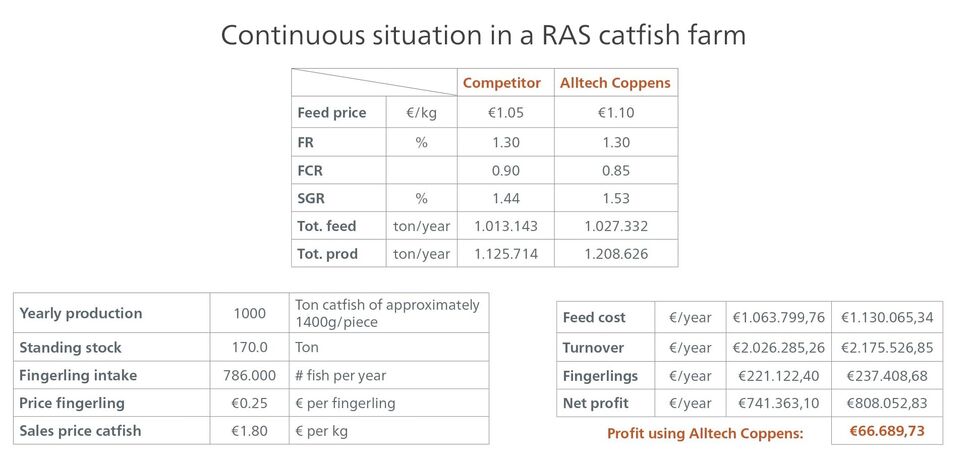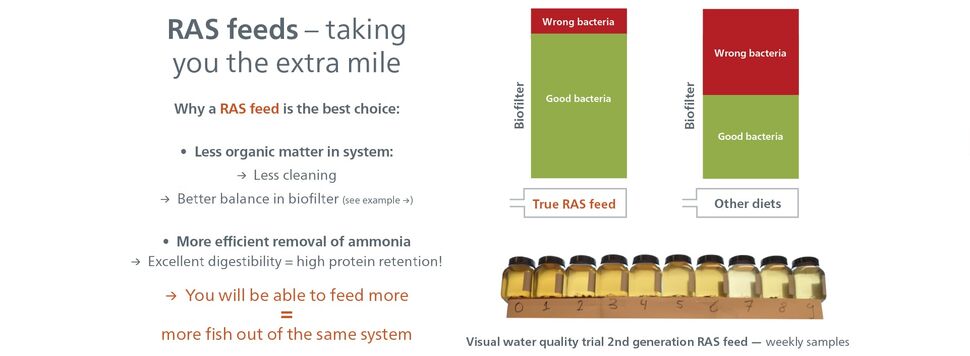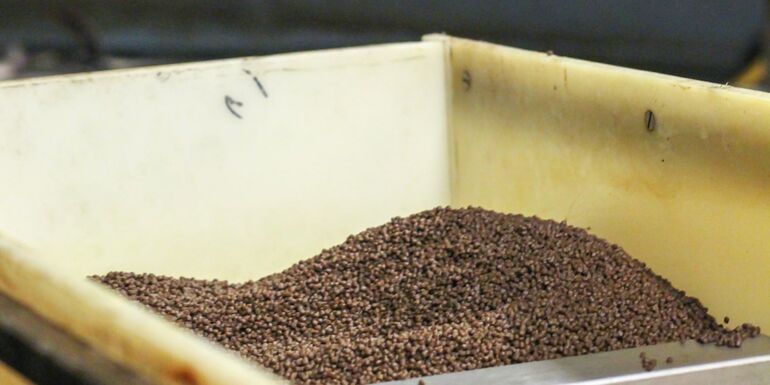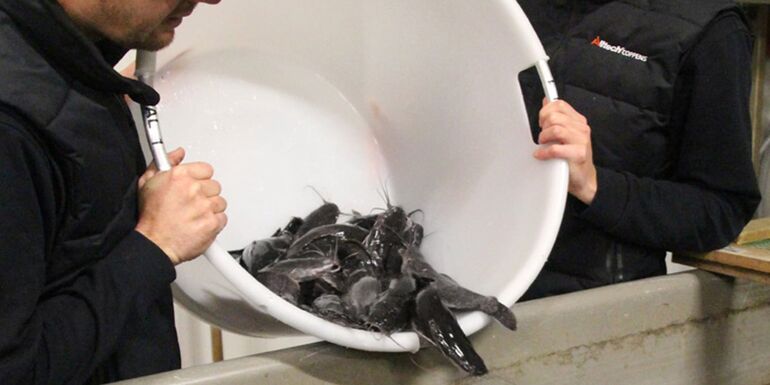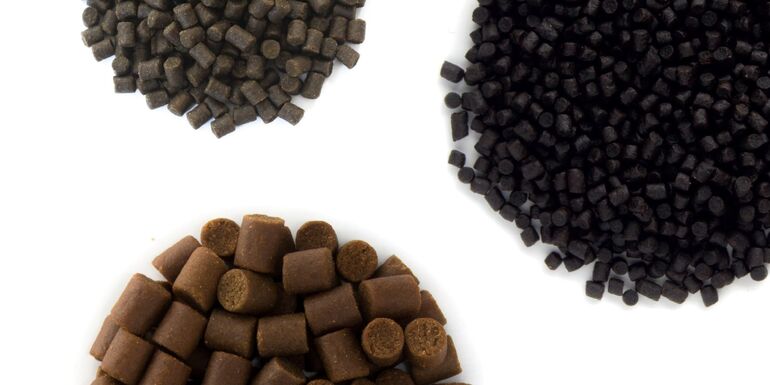
Can your farm break through the glass ceiling?
For many years, the concept of RAS (recirculating aquaculture system) farming and its customized feeds were generally assumed to have reached the limits of their efficiency. While RAS still had the upper hand on traditional farming systems, with regard to both production and sustainability potential, it was believed that there was nowhere to go when it came to further improvements.
However, research at the Alltech Coppens Aqua Centre has breathed new life into RAS farming. Backing up remarkable findings with field tests and customer experiences, Alltech Coppens has provided RAS with the momentum it needed to break through its glass ceiling.
The perceived limit
A RAS is a complex artificial reproduction of an aquatic ecosystem, allowing fish farmers to increase their scale of production drastically and in a very sustainable way. While RAS, compared to other ways of fish farming, requires a high initial and operational capital investment, this startup investment can be easily recouped when running an optimised system. The profitability of RAS depends on the productivity (kg/m3/year) of the system and, therefore, it can make a difference with a relatively high stocking density and growth rate.
However, while the functionality of a RAS seems straightforward (water in the tank circulates through the filter system and is reused), getting the set up just right can be complicated. For fish to reach maximised growth levels, pristine water conditions are essential. Every RAS system is also unique, with its own optimal way to be run. Some farms can spend years trying to figure out how their system can achieve the best performance and find a balance. Even the aspects that are meant to distinguish the RAS can lead to its downfall. While the system boasts the capacity for a high stocking density, its need for constantly clean water means that excess discharging wastewater can easily become an issue if the farm is restricted in that. This means that farmers will often have to compromise on desired density in order to keep waste to a minimum.
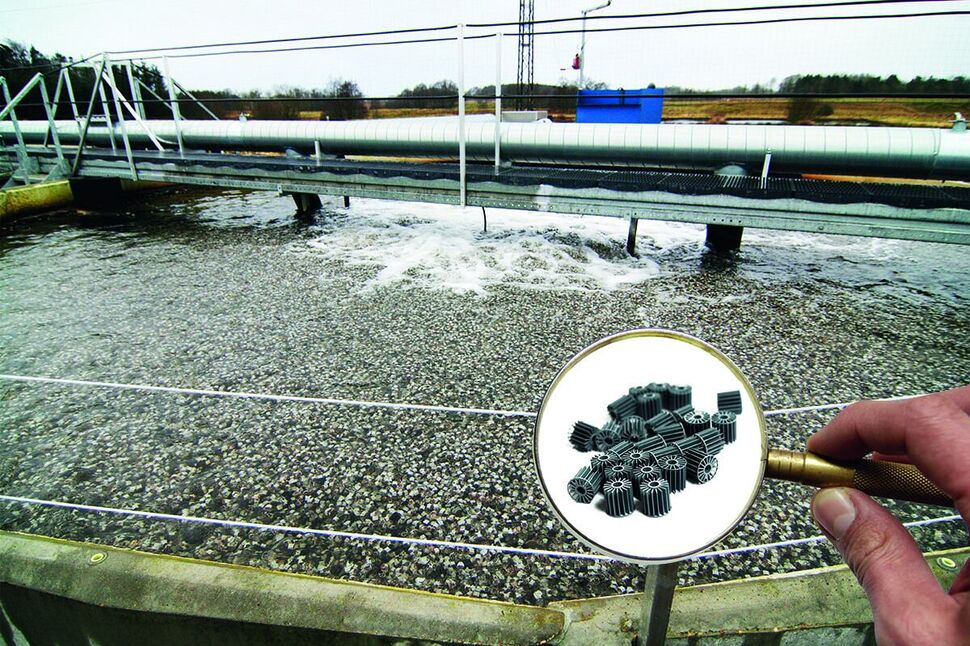
Another element that distinguishes RAS from traditional systems is the biofilter. When the water in a RAS passes through this filter, it filters out the harmful ammonia that is produced by the fish and excreted through their gills into the system. Every biofilter has a fixed surface area on which bacteria can grow and, therefore, determines its capacity for transforming the harmful ammonia into nitrite and, eventually, the much less toxic nitrate. However, if the organic load is too high, the biofilter is less effective, making the overall system less efficient. It is important to bear in mind that the biofilter can only handle a certain amount of ammonia per day which typically is related to the feed that is used.
Many of the issues farmers face, trace back to the feed they use and how it was digested by the fish. Feed management is vital to achieving optimal performance in RAS and pushing passed previously perceived limits. Pairing your system with a feed that complements its unique characteristics can help to optimise the water quality and, especially, oxygen levels, helping you achieve growth maximisation and providing attractive financial benefits. However, using the feeds typically available on the market, producers could find no way of attempting to increase stocking density or growth rate without compromising the functionality of their system, leading many to believe that RAS could progress no further.
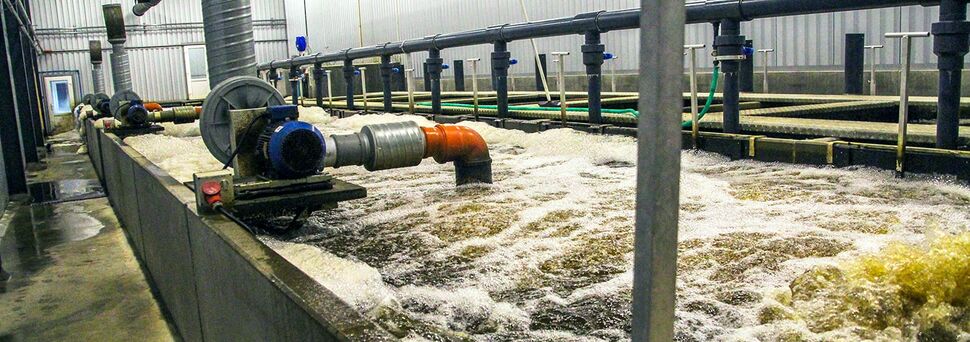
Exceed your maximum growth feed level
In Alltech Coppens, we have developed a line of specialized RAS feeds that significantly limits the adverse effects of feed on:
• The biofilter (and, in turn, water quality)
• TSS (total suspended solids)
• Oxygen levels
This can lead to significantly lowered FCR and growth exceeding your current maximum.
These RAS feeds are optimised for digestibility, resulting in better FCR because of the high protein retention, leading to less faeces production in the end. This saves farmers work with cleaning the systems and gives you a higher production potential for the same biofilter by lower ammonia production per kilogram of feed and better-balanced biofilters.
